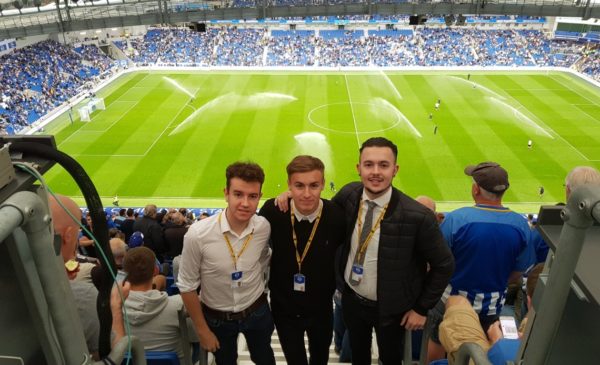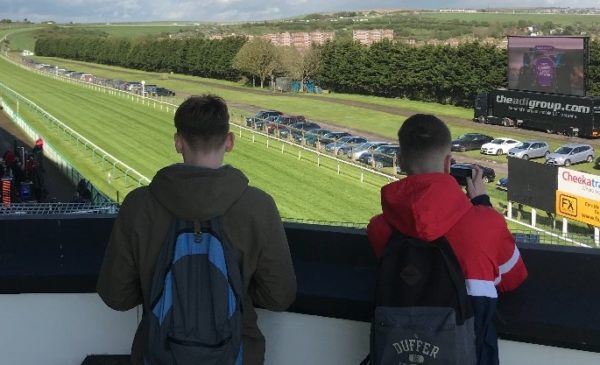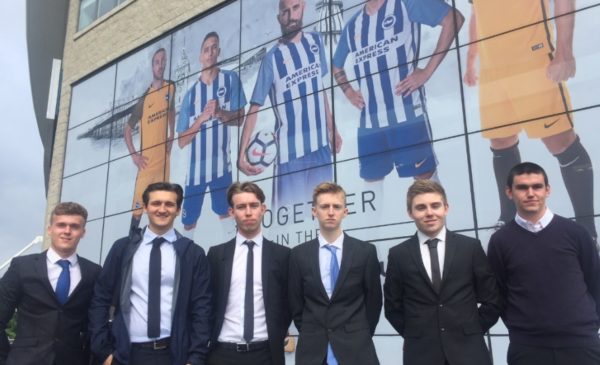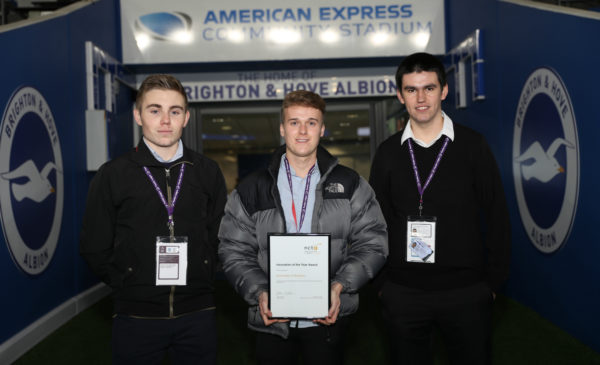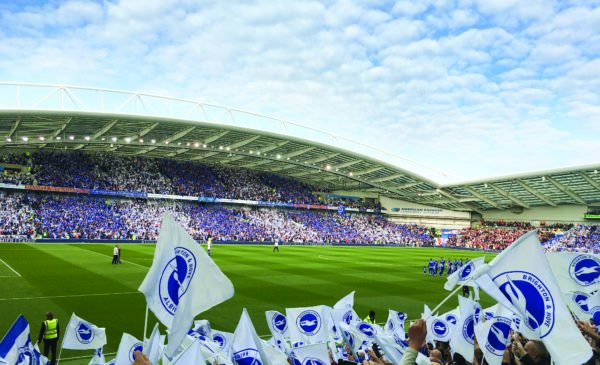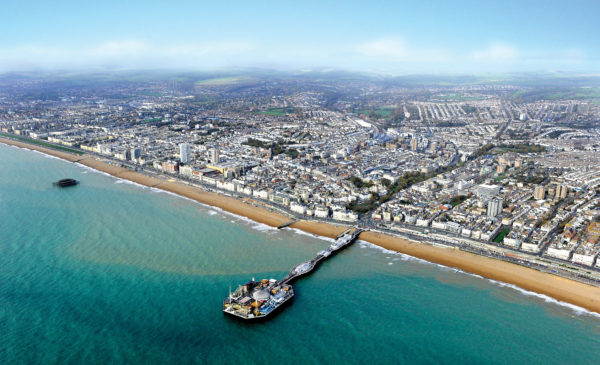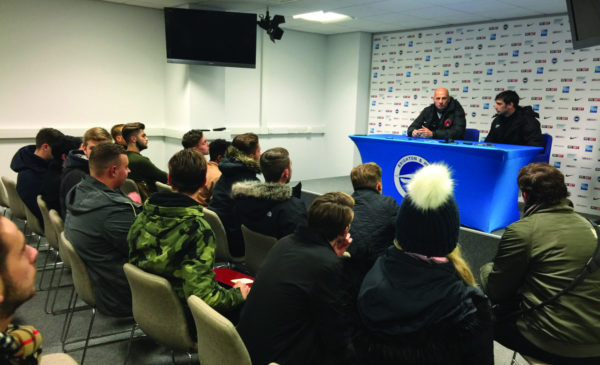Words by Tony Robertson (@TonyRob84).
Welcome to edition number seven of Overtime Online’s Weekly F1 column Life In The Fast Lane.
This week I’ll once again be looking at what happened in this weeks Virtual Grand Prix which this week is happening at the iconic Interlagos.
Also for something a little different, I’ll be reviewing a series I have recently finished which really doesn’t belong in an Formula One column simply because it’s about Volleyball, but more on that later.
For now lets get underway with the Virtual Grand Prix series.
Brazil is best:
Call me bias if you will, but three things in life are certain: death, taxes and the Brazilian Grand Prix being entertaining.
This week the Virtual Grand Prix series made its way to Interlagos after a fan poll voted for the track as the next race to replace the cancelled Dutch Grand Prix scheduled for this weekend.
Like Vietnam, the Dutch GP is not on the F1 2019 Video Game so once again the track needed to be replaced with an alternative.
The last two VGPs have seen ‘banana man’ Charles Leclerc take the chequered flag in quite comfortable circumstances. This week though was to be where the King of the VGP was to be dethroned.
This week once again saw a host of new names combine with regulars to complete the grid line up. England Cricketer Ben Stokes returned to partner Alex Albon at Red Bull while Youtuber Jelly came in to replace Carlos Sainz Jr. and partner Lando Norris who actually managed to start this time.
AC Milan captain Alessio Romagnoli came in alongside Ashes winner Stuart Broad to represent AlphaTauri (formerly known as Toro Rosso), while David Schumacher, nephew of a certain seven-time world champion, partnered the ever punctual Jimmy Broadbent.
However, it was Mercedes Formula E driver Stoffel Vandoorne who took pole position from qualifying, though this was to be a short-lived experience.
As the lights went out, Vandoorne started poorly and was clipped from behind, sending him towards the inside wall where George Russell, who started in second, just happened to be, preventing a wall collision.
In the ensuing chaos, Albon took advantage and moved from fifth up to the top of the order with Leclerc coming up from sixth to be hot on the Red Bull drivers tail.
The racing that ensued was nothing short of breathtaking.
Leclerc and Albon battled ferociously lap after lap in trying to gain an advantage against one another. They traded positions so many times throughout the race, neither one willing to concede the race to the other.
However, a good pit stop strategy is vital in F1 and it was Leclerc who pitted first, going onto the hard compound tyre to try and undercut his adversary.
The strategy would prove ineffective, as Albon pitted and changed to the softer medium compound which is slightly quicker albeit less durable than the hard tyre.
This battle of Interlagos continued at its thrilling best until the final lap of the race where Albon managed to garner an insurmountable gap to the car behind.
With Albon crossing the line in first, it would be easy to assume Leclerc finished second. And he would have if it weren’t for a penalty the Ferrari driver had picked up earlier in the race for exceeding the track limits and for the composed patient driving from George Russell.
The Brit had been in third for a large portion of the race and used a similar pit strategy to Albon. He had been unable to close the gap to the two flawless drivers in the front but nor had they managed to widen the gap.
As the pair battled this gave Russell enough of an opportunity to squeeze as much as he could out of his car (normally a Williams car would find itself dead last but all the cars are given equal performance for the sake of competitiveness) and keep the gap down to just a few seconds.
This would ultimately prove to be key as he managed to snatch second, relegating Leclerc to the bottom place on the podium. This meant Russell took his best finish so far in a Virtual Grand Prix, while the two Mercedes drivers, Vandoorne who managed to recover from his torrid start and Esteban Gutierrez took fourth and fifth respectively.
Meanwhile, Norris achieved a top 10 finish while Antonio Giovinazzi failed to finish the race after a coming together between him and Nicholas Latifi on lap 11 which sent the Williams car into the wall as they jostled for the fourth position.
Unsurprising and familiar circumstances:
Like last weeks announcement from Silverstone that any race held there would be behind closed doors, the Hungaroring will also be following this example.
Race organisers confirmed earlier this week that any race held there will take place without fans.
This comes after the Hungarian government banned any event with more than 500 spectators.
Race organisers at the Hungaroring confirm that any Hungarian Grand Prix will take place without fans#F1https://t.co/03bW67xdsA
— Formula 1 (@F1) May 1, 2020
Something new for a change of pace:
Many have described F1 drivers as fighter pilots. If this is the case then the best way to describe Volleyball players would be as flying birds. At least this is the perception from the show Haikyuu.
The show put simply, is about Volleyball.
Before watching this series I had only seen glimpses of Volleyball. These glimpses had often come at the Olympics where Volleyball was allowed to be played. So I went into the series not knowing much at all, except for that the show was highly recommended and was said to be one of the best sports shows around.
Safe to say I was not disappointed at all. I would highly recommend anyone who hasn’t watched the show – to watch the show. You shouldn’t knock something until you’ve tried it after all.
The show centres around the pint-sized ball of energy that is Shoyo Hinata and the socially awkward volleyball ‘genius’ that is Tobio Kageyama as they move into high school.
While the pair are rivals at first, with the help of some amazing side characters, especially second-year Ryunosuke Tanaka and fellow first-year Kei Tsukishima (though I love all the characters), they begin to form a formidable on-court relationship.

I don’t want to spoil any plot points but each character has their own special quirks to them. Even the antagonists of the series are well-rounded and fun while being formidable opposition for the team overcome.
The show really catches the ideas surrounding sportsmanlike behaviour.
What’s more, the show is excellent at explaining how the sport works and gets gradually more complex as it runs. Even more amazing is that the show is quite faithful to the sport itself. While it has the obvious dramatization which makes Anime so distinguishable, it also has a keen accuracy for the way the Volleyball in the series matches Volleyball in the real world.
It’s currently on its fourth season, with the second part of the fourth season set to air in July 2020. The first two series of the show are on Netflix and each consists of 25 episodes.
Seasons three and four can easily be watched on any Anime streaming website. Season three only has 12 episodes, but this is with good reason and the first part of season four has 13 episodes. There are also OVAs which act as extra content to the main storyline.
Furthermore, it is available on in both an English Dub (English voice actors) and English Subs which requires reading subtitles unless you’re fluent in Japanese. While the little bit I have heard of the Dub is ok the original Japanese voice acting is unbeatable and reading a few subtitles doesn’t make much of a difference to the experience.
Overall the show genuinely is quite phenomenal, from animation to music score, to character development.
If you want something new to watch try something new and try Haikyuu. You won’t be disappointed.
Haikyuu: 9/10
There isn’t much in the way of a trailer so I’ll leave you with the first opening of the show (and yes I know it says it’s the trailer but just trust me on this one).
That brings me to the end of this weeks column. You can check out last weeks column here but until next time have a good one.

